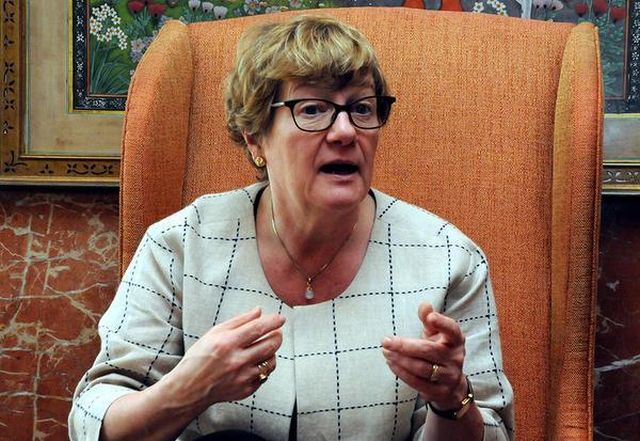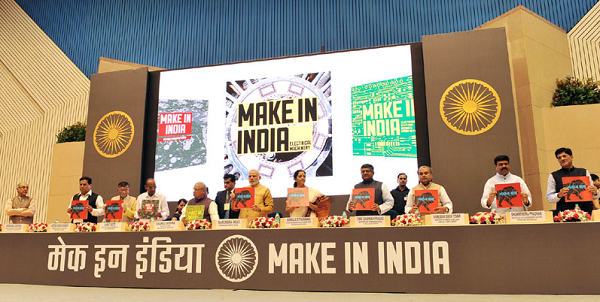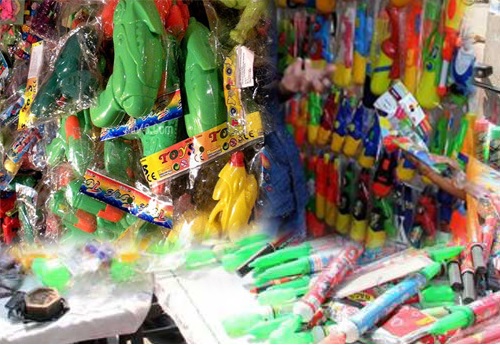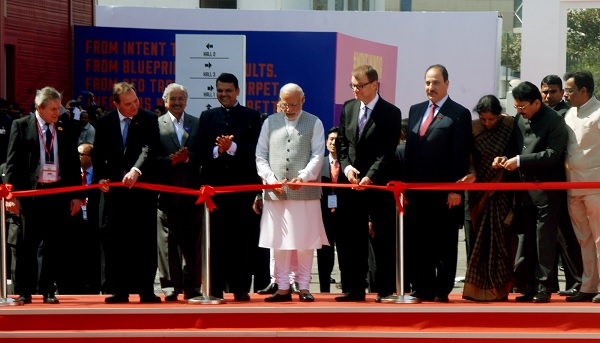
by Editor | May 25, 2021 | Interviews

Nina Vaskunlahti
By Mudita Girotra,
New Delhi : The Make In India initiative to encourage national and multi-national companies manufacture their products in the country can play a role in boosting Finlands relations with India, the country’s Ambassador, Nina Vaskunlahti, has said.
“Indian politicians always tell us that they want to make in their country but can’t do it alone,” Vaskunlahti told IANS in an interview.
“India is open for collaborations, ideas, innovations — things that can be together,” she said.
“An Indian colleague recently proposed the idea of making it in the Finn-Indian way by putting together the best of the two nations together.”
She said a lot of cooperation, visits and interests can be seen on both sides and stressed that it is important that relationship between two countries is versatile and strong.
“That is what the case between India and Finland is…there is politics, economy, tourism, trade, and investments.
“Trade relations have grown across the years. Currently, the trade volume is around one billion Euros, which is not too bad. Last year, the trade grew by 17 per cent.:
Vaskunlahti noted that Indian firm Mahindra Holidays and Resorts has increased its stake in Finland-based Holiday Club Resorts by buying additional 6.33 per cent shares at a consideration of 4.37 million euros.
“There are roughly 100 Finnish companies active in India and there is increasing Indian interest in Finland and in investing in the Finnish economies.”
The RSS chief, on September 9 at the launch of the Indian Education Manual (Bhartiya Shiksha Granth Mala) by Ahmedabad-based think-tank Punarutthan Vidyapeeth, said there was a need to overhaul the existing Indian education system on the lines of Finland, which is similar to the ancient Indian gurukul system.
Vaskunlahti commented on this saying, “Finnish education system is based on Finnish ideas and legislation…strong parts of the Finnish education system were “the high-level education of teachers”.
“They have a great academic background and have lots of freedom in the way they teach.”
She said the system in her country lays stress on quality education from an early stage. “From kindergarten to primary school to secondary, the Finnish education system is free (of charge) for all,” she added.
“It is also based on an open access to information and to equality among people.”
Delhi Education Minister Manish Sisodia had visited Finland last year and said that India needed to learn a lot from the country’s education system, which is “the best in the world”.
Are there any plans to sign any agreements with India to develop its education system or otherwise?
“We don’t really believe in agreements. People are always boasting so and so many agreements were signed. You can sign but the proof is..if the agreement really brings something.
“Many educators from the (Indian) government and the profession are visiting Finnish insititutions…talking to their counterparts. We are organisimg different seminars and events to bring across what we are doing,” Vaskunlahti said.
“There are firms ready to export their ideas but education system as such cannot be exported. It is based on your own values. Nevertheless, we can always export the best practices and share our mannerisms.”
Cultural cooperation interactions are also going on between the two countries, she said. “When people get interested in each other’s cultures and countries, that’s when interactions start happening,” she explained.
“I think Finland is an inspiring country for Indian artists and photographers, the same way that India can be inspiring for Finns. I saw lots of Indian travellers, artists spending time there.”
The Embassy of Finland with Fortum India and Visit Finland ha brought to the capital a photo exhibition titled, The Northern Lights — spectacular solar flares that occur mainly during winter in Finland.
Vaskunlahti said the show, which ended on September 21 in Delhi was a novel platform to enhance cross cultural relationship between India and Finland. It will also move to Kolkata, Mumbai and Chennai.
“The exhibition opened interesting opportunity for the Indian audience to experience Finland through artistic photography,” she added.
As part of the celebrations of 100 years of Finland’s independence, the show brought photographs on the play of the sun rays and light.
“The pictures look surreal when you look at the colours but they are real…this is what the sky looks like in this phenomenon.”
(Mudita Girotra can be contacted at mudita.g@ians.in)
—IANS

by Editor | May 25, 2021 | Opinions
 By Amit Kapoor Manufacturing in India has not been particularly strong. This is because of a host of reasons emanating from the India’s socialist era. Prominent among these include labour laws resulting in trade unionism, licenses for regulating production activity and the like.
By Amit Kapoor Manufacturing in India has not been particularly strong. This is because of a host of reasons emanating from the India’s socialist era. Prominent among these include labour laws resulting in trade unionism, licenses for regulating production activity and the like.
But the performance of the sector even post that period (initiated in 1980s and culminating into the reforms of 1990s) has been far from stellar. Although manufacturing sector has grown overall, the share of manufacturing in GDP has stayed constant at around 15 percent. The choice for consumers has increased manifold, but the output of manufacturing growth has been steady.
In comparison to the services sector, the manufacturing sector has been clearly a laggard. In spite of this, a large number of sub-sectors have developed and deepened the manufacturing capability like the automotive industry, pharmaceutical industry, etc. Another prominent feature of Indian manufacturing is that still a massive portion is done by the small and medium sector enterprises.
It is in this light of this context and backdrop that the recent move by the Department of Industrial Policy and Promotion (DIPP) (which awaits final approval of the finance minister) becomes important. The move does away with the 30 percent sourcing requirement for Apple, the Cupertino based technology giant. The sourcing requirement mandates that in single brand retail 30 percent of content is to be sourced locally. The apparent logic being given by the Indian government is that it can grant companies an exception if they are found to make state-of-the-art and cutting-edge products.
Apple till date has not been able to enter India, but most likely sees India as a key market as it has a low smartphone penetration (<20 percent) and shipped roughly 1.9 million devices to India in 2015. Also, in the years ahead, India is slated to be one of the biggest markets for smartphones. Till date, resellers were selling Apple products in India. This could change if the move sees the finance minister’s approval.
There are three important issues surrounding the move. First, it tries to rectify a policy problem with a specific move. The question now is how is the decision on cutting edge products being made. Apple is into electronic consumer durables like phones and laptops. It does not appear cutting edge. If a change has to be made the change should happen at the FDI policy level.
Also, it will be very difficult to reject applications by players like Xiaomi, the Chinese smartphone manufacturer, as its products use similar technology. In a competitive market this could very easily spell doom for incumbent Indian companies like Micromax, who had not faced massive international competition till date. This brings us to the related issue of the impact of the move.
Second, the move is slated to impact different stakeholders differently. For the consumers choice and service is going to increase and most likely the prices are going to get streamlined with international prices of Apple products. This may be seen as beneficial impact of Apple’s entry for consumers.
However, with regard to key programs like ‘Make in India’ the move could have a ‘no effect to a negative effect’ unless Apple also invests in manufacturing. The move does provide Apple with access to Indian market but does not provide Indian industry especially MSME’s with much scope for capacity building. It is because the cluster of ancillary firms which could supply parts to Apple by local production and manufacturing will not take place now. In addition if Xiaomi also enters India chances of incumbent firms facing stiffer competition may be bad from ‘Make in India’ point of view.
Third, the move does not help the cause of making India a hub of ESDM sector. This is because it just makes India a market but not a production destination. Ideally, Apple should make a commitment to invest in India as costs are low with respect to labour (even though Apple’s business is not very labour intensive and it outsources most of its production).
The capacity building effort in India can also help Apple immensely as India is a diverse nation and can throw up unique insights into operating in emerging markets. The FM must look into all the details of what went into the move by DIPP before signing the document. Also, it seems like it is time for review of sourcing requirements if they are indeed coming in the way of progress in the present policy context.
(The article is co-authored with Sankalp Sharma, Senior Researcher at the Institute for Competitiveness, India. Amit Kapoor is Chair, Institute for Competitiveness & Editor of Thinkers. The views expressed are personal. Amit can be reached at amit.kapoor@competitiveness.in and tweets @kautiliya)

by Editor | May 25, 2021 | Business
 Auckland, (IANS) President Pranab Mukherjee on Saturday invited New Zealand investors and entrepreneurs to participate in the “Make in India” initiative.
Auckland, (IANS) President Pranab Mukherjee on Saturday invited New Zealand investors and entrepreneurs to participate in the “Make in India” initiative.
“New Zealand has made tremendous progress in dairy development, food processing, communications and information technology, clean energy and water, disaster management, biotechnology, healthcare and services, to mention a few,” Mukherjee said in his speech during a banquet hosted in his honour by New Zealand Governor General Sir Jerry Mateparae after his arrival here from Papua New Guinea earlier in the day.
“We would very much like to enhance our bilateral co-operation in these areas, learn from the successful experience and practices of New Zealand and collaborate with you in creating new and innovative products and technology,” he said.
Stating that India looked forward to new partnerships with New Zealand in areas of common interest, he said: “We invite investors and entrepreneurs from New Zealand to join Indian counterparts in the ‘Make in India’ initiative of my government.”
Mukherjee said that bilateral relations between India and New Zealand gained a new momentum since the visit of New Zealand Prime Minister John Key to India in June, 2011.
“In 2013, our bilateral trade crossed $1 billion,” he said.
“However, given the relative size of our economies and the wide convergence of interests in many areas, we both agree that the present level of trade and investment needs to be vigorously advanced in order to realise its substantial potential.”
The president sought India’s cooperation in reforming the UN Security Council (UNSC) and said that India stood ready to shoulder greater responsibilities in the international arena.
“In the United Nations Security Council, New Zealand has addressed issues of global security and highlighted the challenges faced by smaller states,” he said.
“The impressive support that New Zealand garnered in last year’s UNSC election revealed both the quality of your diplomacy and the trust that other countries have placed in you. We look forward to enhanced cooperation between our two countries both in the regional as well as global context.”
Referring to the Indian diaspora, Mukherjee said that New Zealand was home to more than 170,000 people of Indian origin.
“Our people to people contacts are growing. Indian students are increasingly opting for higher studies in New Zealand and we are seeing enhanced tourist flows in both directions,” he said.
Mukherjee’s is the first ever presidential visit from India to New Zealand.
According to the New Zealand country strategy paper, its goal is to have India as a core trade, economic, and political partner.
The president’s visit is aimed at realising that goal, Jaideep Mazumdar, joint secretary (South) in the ministry of external affairs, said at a media briefing in New Delhi ahead of the visit.
New Zealand supports India’s aspirations for permanent membership of the UN Security Council.
People-to-people ties between India and New Zealand have traditionally been close.
The number of Indian students in New Zealand has grown exponentially over the last few years to about 23,000.
Last year, 43,000 Indian tourists went to New Zealand and from the New Zealand side there were about 25,000 tourists to India.
Apart from its strengths in agriculture and dairy farming, New Zealand has certain unique high technology skills and strengths as well.
Security systems in the Indian parliament, Hindustan Aeronautics or the Indian Space Research Organisation (ISRO) among other locations are developed and installed by a New Zealand company.
While the Mumbai Police uses amphibious boats which are manufactured by a New Zealand company, the Coast Guard of India uses jet propulsion engines in their patrol boats that are manufactured by a New Zealand firm.
Air cargo handling systems, conveyor belts and even the design of several malls in India has been done by New Zealand companies.
New Zealand also has great technological abilities in cold storage supply chain management and post-harvest technologies, which are of interest to India .

by Editor | May 25, 2021 | Business, Large Enterprise
 Lucknow : (IANS) Indian manufacturers of Holi colours, water guns, balloons and other products are losing out to Chinese imports because of at least 55 percent price differential, said a survey-cum-analysis by Assocham.
Lucknow : (IANS) Indian manufacturers of Holi colours, water guns, balloons and other products are losing out to Chinese imports because of at least 55 percent price differential, said a survey-cum-analysis by Assocham.
“Invasion of innovative and fancy Chinese Holi toys and colours despite the government’s efforts to promote ‘Make in India,’ is making the survival difficult for small manufacturers,” said the survey conducted by Social Development Foundation of Associated Chambers of Commerce and Industry (Assocham).
Indian manufacturers were facing losses to the tune of a whopping 75 per cent as only about quarter of their products found buyers, said the survey based on responses of about 250 manufacturers, sellers, suppliers and traders of Holi colours, water guns and other such products across India.
“There is a price differential of over 55 per cent between Chinese Holi colours and sprinklers and those made by local manufacturers,” said D.S. Rawat, secretary general of Assocham, while releasing the findings of the survey on Tuesday.
Majority of the respondents said that traditional ‘pichkari’ (water gun or sprinkler) has almost disappeared from the markets due to minimal consumer interest.
Despite being made from toxic products, ‘Made in China’ Holi toys and colours are favoured by customers as they are much cheaper than locally made products, said the respondents.
Many of the respondents rued the rampant use of acids, alkalis, diesel, engine oil, glass powder, mica and other substances that damage the skin, together with cheap quality of plastic being used to manufacture low-cost water guns.
Most of the local manufacturers said they only sell ‘herbal’ colours that don’t damage the skin.
Some blamed the rise in price of raw materials like water-soluble plant pigments for slack in their business.
According to a rough estimate by Assocham, over 5,000 colour manufacturing units produce over five lakh kilograms of ‘gulal’ (as dry colour traditional used in the festival is known) to be used on Holi across India.
Over two lakh kg of gulal is consumed across Uttar Pradesh alone.
The state of Uttar Pradesh is home to ‘Braj mandal,’ the region associated with Lord Krishna, where Holi is celebrated with special fervour and attracts people from India and abroad.

by Editor | May 25, 2021 | Economy, Investing, News

The Prime Minister Shri Narendra Modi inaugurate MAKE IN INDIA function at BKC complex in mumbai on February 13, 2016. Chief Minister of Maharashtra Shri Devendra Fanavis and Governor of Maharashtra Shri Vidyasagar Rao, and others dignitary present at inaugural function.(Photo PIB)
Mumbai:(IANS) Unfolding the red carpet for domestic and foreign investors, Prime Minister Narendra Modi opened the “Make in India Week” here on Saturday, showcased as the largest event of its kind in the country to project it as the preferred global hub for manufacturing.
The prime minister also listed a number of initiatives taken by his government to make it easier for doing business in India, along with enabling policy decisions and corrections. “I repeat, we also decided there will be no retrospective taxation,” he said at the inaugural.
“Make in India has become the biggest brand India ever created. It has captured the imagination of people, business, institutions, political leaders and media,” he said at the National Sports Club of India’s indoor stadium that was packed beyond its 5,000 capacity.
Modi said the efforts were showing. “Our foreign direct investment inflow has gone by 48 percent since the day my government came into office,” the prime minister said. He also said concerns over intellectual property and bankruptcy laws were also being addressed.
“Almost on a daily basis we are trying to remove the bottlenecks that were affecting business,” he said. It was, therefore, not surprising that a host of multilateral institutions have said India will log even better growth that the present 7.5 percent in the coming years, he added.
“In 2014-15, India contributed 12.5 percent to global growth. It’s contribution to to the global growth is 68 percent higher than its share of world economy,” he said, amid applause from the audience, which included chief ministers, ambassadors, industrialists and policy-makers.
Modi said India was particularly keen on scaling up investments in infrastructure — from roads and railways to digital networks and clean energy. Towards this, he said, interest-free bonds were the next on the agenda.
“Do not wait. Do not relax. You should take advantage of the immense opportunities in India.”
The event also saw the Time India award conferred on Tata Steel for best in class manufacturing, Hero MotoCorp for innovator of the year and Yogesh and Rajesh Agarwal of Ajanta Pharma for young maker of the year.
Earlier, Commerce Minister Nirmala Sitharaman said India was ready as a global manufacturing hub.
“The idea of the Make in India plan was to make the environment in the country from the regulated to a facilitator,” said Sitharaman, adding this has resulted in a vast improvement in ease of doing business in the country. “This is a moment India is cherishing.”
In his maiden Independence Day address on August 15, 2014, the prime minister had said India must become a global manufacturing hub, with “zero defect” in product quality and “zero affect” in its impact on environment. The “Make in India” campaign was launched a month later on September 25.
Earlier, Modi inaugurated the Make In India Centre at the Mumbai Metropolitan Region Development Authority Grounds with his Swedish and Finnish counterparts, Kjell Stefan Lofven and Juha Petri Sipila, respectively. The two dignitaries also addressed the inaugural event.
Themed on innovation, design and sustainability, the centre showcases some of the country’s most trendsetting products and manufacturing processes before the world for the first time after the global launch of the Make In India initiative 17 months ago, commerce ministry officials said.
Those showcasing their respective strengths include corporate houses like the Tatas and Reliance groups, four top oil companies, as also institutions like the Indian Space Research Organisation and the Defence Research and Development Organisation.
Make in India Centre includes sector-specific pavilions showcasing 11 focus sectors of the six-day event, 17 state exhibitions and several country pavilions. The area covered is some 220,000 square metres and accommodates 27 halls for 190 companies to show their prowess.
Officials said the Make in India Week is an enabling event to showcase India and attract investment, while also providing opportunities to the states. Also planned are some 20 sector-specific seminars in areas like policy, business climate and intellectual property.
The programmes will see the participation of central and state ministers, chief ministers, senior government officials, top industrialists and businesspeople from India and overseas, and several government and business delegations from abroad.
Government delegations from 49 nations and business teams from 68 countries have converged here.





